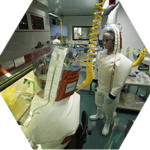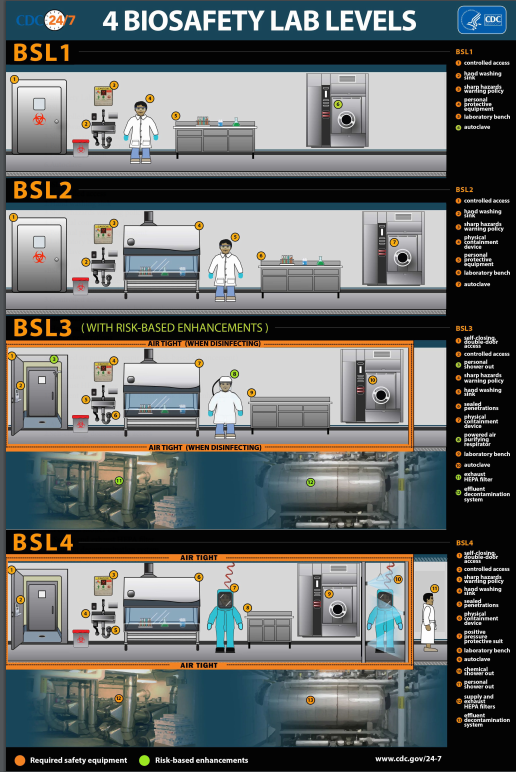
There are many different agents that can cause diseases (viruses, bacteria, prions, etc.). Some agents cause no or very mild diseases in humans, while others can be fatal. To ensure that research on these dangerous agents advances but is performed in the safest conditions, scientists rely on specialized containment laboratories and adhere to strict biosafety* and biosecurity** protocols and procedures to keep themselves, the public and the environment safe. These laboratories are assigned with a high BioSafety Level (BSL) of 3 or 4.
BSL3 and BSL4 laboratories, also known as high containment facilities, are very expensive to build and maintain. Therefore,they represent a unique capacity for studying highly pathogenic diseases.

ERINHA brings together Europe’s top civil high containment laboratories, as well as senior academic experts in the field, and focuses on highly pathogenic agents with no approved or widely available treatment or vaccine. By working together and providing access to their laboratories, ERINHA member facilities foster research in their field of expertise and accelerate the development of countermeasures to keep the public safe.
* Biosafety: includes all the protocols and laboratory engineering necessary to protect public health and the environment from exposure to any infectious disease being handled in a laboratory.
** Biosecurity: includes all protocols and laboratory engineering that works to prevent the misuse through loss, theft, diversion or intentional release of pathogens, toxins and any other biological materials.
